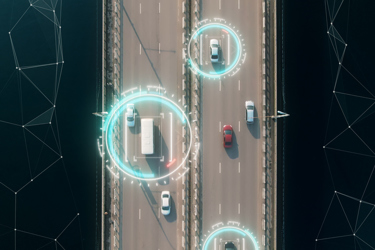Why Geolocation Benefits Asset Management
By Pedro Pachuca, Director of IoT Wireless in Semtech’s Wireless and Sensing Products Group

Asset tracking is among the earliest applications to gain significant traction - first in the machine-to-machine market over the last two decades - and, in more recent years, in the internet of Things (IoT).
With the evolution of IoT and the increasing availability of new technologies, asset tracking applications are becoming more ubiquitous and sophisticated. However, not all technologies are created equally. IoT solutions are often expensive or impractical to implement. The main difficulty can be linking remote sensors wirelessly to the internet across a variety of sites, both indoors and outdoors and across different countries, in a seamless manner that follows all steps of the operation. The ideal wireless solution should be inexpensive, secure, work over long distances, and have sustainable battery life.
To address this issue, organizations can implement an IoT asset tracking system that leverages low power and long-range technology to provide users with a highly versatile solution. By coupling those features with a low cost and lightweight solution with a standardized infrastructure, the result is a reliable tracking solution that allows logistics operators to reduce downtime during transportation.
Asset tracking often requires sensors to be installed in industrial environments minimizing the impact on the production. Having IoT-based sensors enables a wide portfolio of applications for indoor and outdoor asset management. This type of low-power solution is unique because it not only provides a cost-effective infrastructure, but it also offers geolocation capabilities with a multiple-year battery lifespan.
The Power Of Geolocation
Geolocation for IoT devices has quickly become one of the biggest opportunities for asset tracking. Many companies are replacing legacy systems with geolocation asset management solutions to locate, track, and monitor physical assets such as equipment, product vehicles, and people.
For the transportation and logistics industry specifically, the National Cargo Security Council estimates that the global financial impact of cargo loss exceeds $50 billion annually. Geolocation ensures that the whereabouts of cargo can be accessed at any time, helping mitigate these challenges. For contractors and construction workers, in particular, they can use smart geolocation solutions to ensure that expensive equipment is not stolen or misplaced at a job site.
Another key feature that many industries are increasingly prioritizing is the ability to seamlessly transition from indoor to outdoor locations, or vice versa. This type of tracking combines GPS scanning outdoors with Wi-Fi scanning indoors without the need for human interaction. Indoor-only tracking is also beneficial for companies looking to monitor boxes within a warehouse or assets within a store environment.
By incorporating IoT-enabled asset management solutions, companies can save time and money as they can more efficiently monitor goods and mitigate against losses or damages. Inefficient and burdensome manual processes can be replaced and the overall total cost of ownership can be lowered.
What Are The Benefits?
Geolocation has revolutionized the way industries across various industries handle asset tracking. It is proving to be a very valuable tool to make life easier for logistic managers. The following are a few ways geolocation is benefiting businesses:
- Efficient fleet management and operations: Geolocation makes it possible for logistics managers to keep track of each product and vehicle deployed from its distribution centers. A smart asset tracking solution makes two-way communication possible – allowing fleet managers to communicate with a driver in real time.
- Optimized allocation and use of resources: With geolocation and GPS technologies, logistics managers can streamline the manpower needed to track down vehicles, product movements, and statistics. By streamlining this process, managers can re-allocated manpower to other departments.
- Availability of real time location-tracking: A smart asset tracking solution can simply inform managers of the whereabouts of goods and also, prevent theft and other losses.
- Increased efficiency and productivity: Having the ability to quickly locate and deploy assets saves time, fuel, equipment, and resources.
With advancements in asset management and geolocation technology, companies are now in a better position to harness smart solutions to improve their logistics management.
About The Author
Pedro Pachuca has over 22 years in the semiconductor industry, specifically focusing on wireless radio frequency. Mr. Pachuca currently is the Director of IoT Wireless at Semtech and is leading in product management for LoRa devices. His previous experience includes product management at Renesas, Silicon Laboratories, and Freescale Semiconductor.
